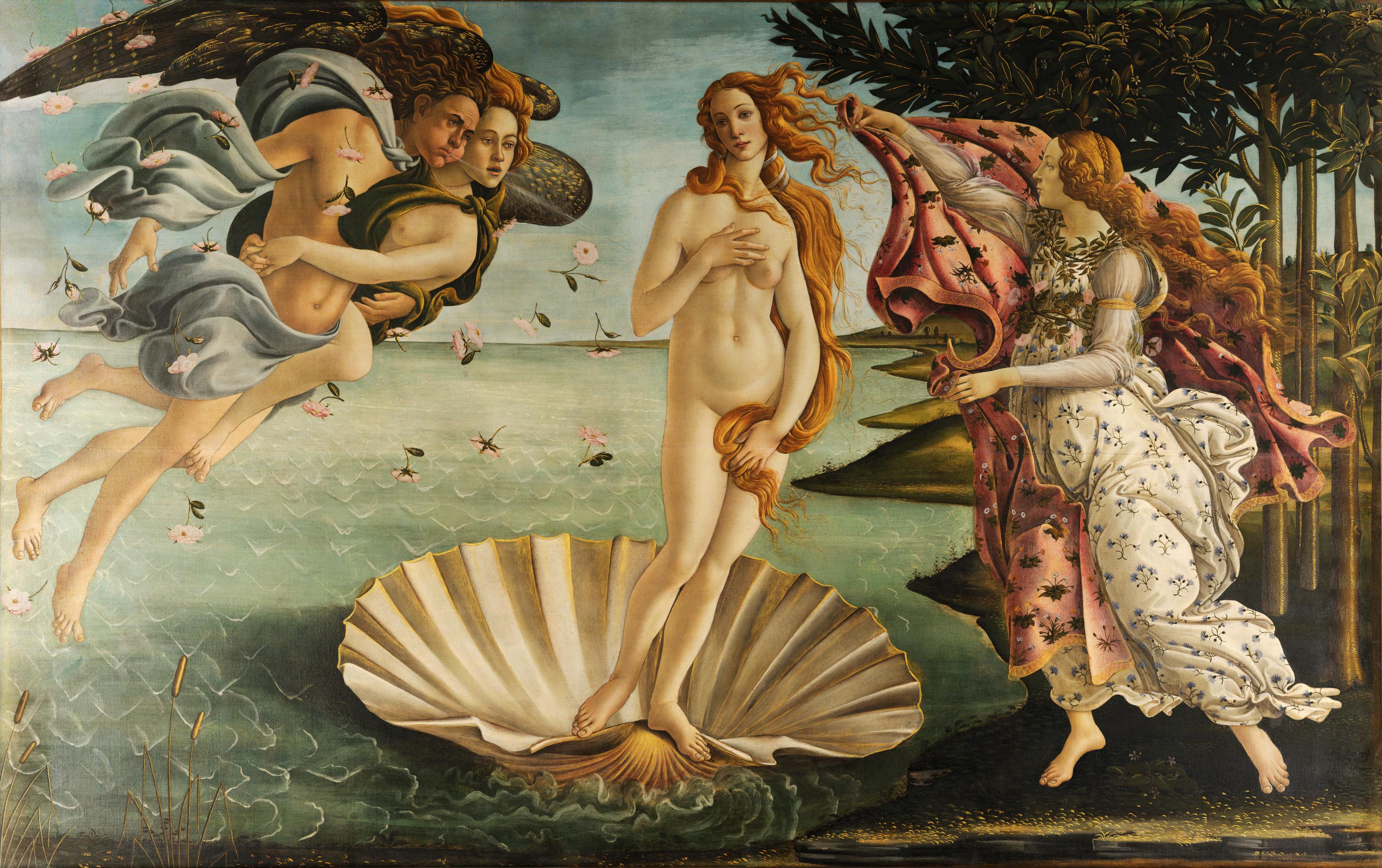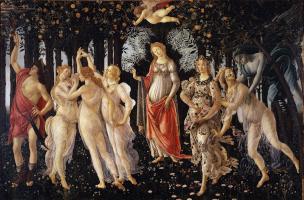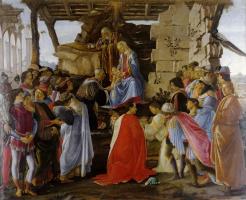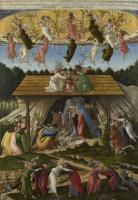Sandro Botticelli
Botticelli was born in Florence and spent most of his life there. Many of his paintings have devotional subjects and were designed for specific settings in churches and other religious buildings.
But he was also the first painter of the Renaissance to use classical myths as central subject matter in his work. The Birth of Venus was almost certainly executed for Lorenzo di Pierfrancesco’s Villa di Costello near Florence.
 Botticelli was unaffected by the passion for realism that was current in his
day. In The Birth of Venus he makes little attempt to persuade us of the
reality of the scene, but we are completely convinced that we are witness to a
splendid moment in the world of ancient myth.
Botticelli was unaffected by the passion for realism that was current in his
day. In The Birth of Venus he makes little attempt to persuade us of the
reality of the scene, but we are completely convinced that we are witness to a
splendid moment in the world of ancient myth.
Legend tells us that Venus, the Roman goddess of love and fertility, was born from sea-foam, and here she is seen slowly floating on her shell-boat in to the shore. The navigation of her journey is undertaken by two intertwined figures, male and female, representing the winds. The male, Zephyr, the west wind of springtime, supports the female, who is probably Flora, his wife. Just where the sea touches the shore, a young woman adorned with leaves and flowers steps forward to envelop Venus in a flowered cloak.
 Venus herself, her wide grey eyes gentle and a little pensive, embodies here
not sensual love but perfect beauty. The draperies of the winds, the flowing
clothes of Venus’s welcoming attendant, and her own glorious golden hair
flickering through the painting like flames, are not naturalistic, but are used
to create a feeling of movement about to be resolved. With one arm Venus
partly covers her breasts, and with the other she artfully arranges her hair as
a modest covering in the traditional pose of classical statues of the goddess
of love. Her left leg bears most of her body weight so that her hip is thrust
gently forward, giving a sinuous S curve to her body. There is flowing, curving
line throughout the composition, in the sharply defined, highly stylized
shoreline, the beautifully arched feet of the human figures and the movement of
drapery and hair.
Venus herself, her wide grey eyes gentle and a little pensive, embodies here
not sensual love but perfect beauty. The draperies of the winds, the flowing
clothes of Venus’s welcoming attendant, and her own glorious golden hair
flickering through the painting like flames, are not naturalistic, but are used
to create a feeling of movement about to be resolved. With one arm Venus
partly covers her breasts, and with the other she artfully arranges her hair as
a modest covering in the traditional pose of classical statues of the goddess
of love. Her left leg bears most of her body weight so that her hip is thrust
gently forward, giving a sinuous S curve to her body. There is flowing, curving
line throughout the composition, in the sharply defined, highly stylized
shoreline, the beautifully arched feet of the human figures and the movement of
drapery and hair.
The landscape is decorative rather than realistic : the waves of the sea are indicated by little white V shapes; the tree trunks are slim brown rods, and the wings of the winds and the sharp spiky leaves of the trees are outlined in gold. There is no physical depth or perspective in the painting; but this heightens the feeling that we are present at a mysterious and magical event, depicted with the delicate beauty which characterizes Botticelli’s work.
The inscription in The Mystical Nativity referring to the Apocalypse and the “troubles of Italy” is in both Greek and Latin. Botticelli had used an archaic device that magnifies the Virgin and Child; altogether, the picture is calling for a return to medieval morality.




